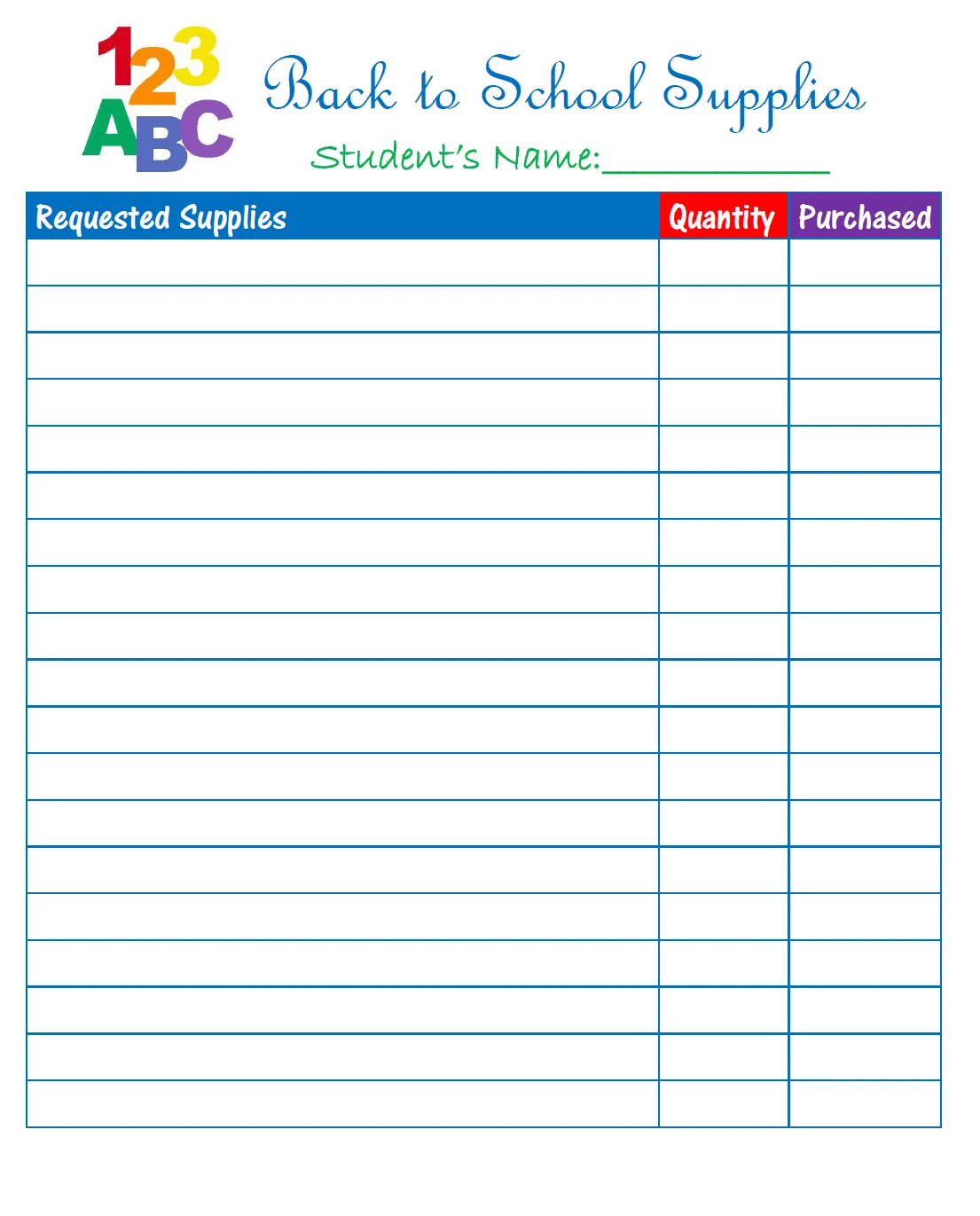When embarking on a new project or activity, whether it’s a DIY home renovation, a camping trip, or starting a new semester at school, having a well-thought-out supply list is crucial.

A supply list ensures that individuals or organizations are well-equipped with the necessary items for a specific activity or period, promoting organization, efficiency, and cost control.
In this article, we will delve into the importance of supply lists, the key elements to include, and tips on how to create an effective one.
What is a Supply List?
A supply list is a detailed inventory of items needed to complete a task, project, or activity. It serves as a roadmap to ensure that all essential materials are on hand, preventing last-minute runs to the store and minimizing the risk of forgetting important items.
Whether it’s a checklist for packing for a vacation or a list of tools needed for a woodworking project, a supply list is a valuable tool for staying organized and prepared.
Why You Need a Supply List?
Having a supply list offers a myriad of benefits, including:
- Organization: By creating a supply list, you can categorize and prioritize items, making it easier to locate and use them when needed.
- Efficiency: With a well-organized supply list, you can streamline the process of gathering materials and completing tasks promptly.
- Cost Control: A supply list helps you avoid purchasing unnecessary items and prevents overspending on materials that you already have.
- Peace of Mind: Knowing that you have all the necessary supplies at your disposal can alleviate stress and anxiety, allowing you to focus on the task at hand.
Types of Supply Lists
There are various types of supply lists tailored to different activities and purposes. Some common types include:
- Travel Supply List: Contains essentials for a trip, such as clothing, toiletries, and travel documents.
- Emergency Supply List: Includes items needed in case of emergencies, such as a first aid kit, non-perishable food, and flashlights.
- Project Supply List: Outlines materials required for a specific project, like construction materials, tools, and equipment.
- School Supply List: Details school supplies needed for the academic year, such as textbooks, notebooks, and writing utensils.
Key Elements of a Supply List
When creating a supply list, it is essential to include the following key elements:
Item Names
Listing item names clearly on a supply list helps prevent confusion and ensures that you are acquiring the right materials. It also aids in organization and categorization, making it easier to locate items when needed.
Quantifying Items for Accuracy
Specifying the quantity of each item required is crucial for accurate planning and budgeting. By knowing exactly how many of each item you need, you can avoid shortages or overages, leading to a more streamlined process.
The Role of Notes in a Supply List
Adding notes to your supply list can provide valuable context or instructions for certain items. Whether it’s a reminder to check expiration dates or a specific brand recommendation, notes help ensure that you are using the items correctly and efficiently.
Checkboxes for Tracking Progress
Including checkboxes next to each item on your supply list allows you to easily track your progress and mark off items as you acquire them. This visual representation of completion can help you stay motivated and focused on completing your tasks.
How to Create an Effective Supply List
Follow these steps to create a comprehensive and effective supply list:
The Initial Planning Stage
Before diving into creating a supply list, take the time to thoroughly plan out the task or project you will be undertaking. Consider all the steps involved, the timeline for completion, and any potential obstacles that may arise.
Researching and Gathering Information
Research is key to creating an effective supply list. Take the time to gather information on the items you will need, such as their prices, availability, and any specific requirements. This will help you create a comprehensive and accurate list.
Organizing Items for Efficiency
Once you have all the necessary information, organize your list by grouping similar items. This will not only make it easier to locate items when needed but also streamline the process of gathering materials.
Estimating Quantities and Budgeting
Estimating the quantities of each item needed is crucial for budgeting and planning purposes. Be sure to account for any potential wastage or unexpected needs to ensure you have enough supplies to complete the task.
Regularly Reviewing and Updating
It’s important to periodically review and update your supply list to reflect any changes or additions needed. As tasks progress and requirements evolve, your supply list should be adjusted accordingly to stay relevant and effective.
Tips for Creating an Effective Supply List
Consider the following tips to enhance the effectiveness of your supply list:
- Start Early: Begin creating your supply list well in advance to allow ample time for gathering materials.
- Consult Others: If working on a group project, consult with team members to ensure all necessary items are included.
- Use a Template: Utilize a pre-designed supply list template to simplify the process and ensure nothing is overlooked.
- Update Regularly: Periodically review and update your supply list to reflect any changes or additions needed.
- Maintain a Master List: Keep a master supply list with frequently used items to expedite future list creation.
Free Supply List Template
In conclusion, a Supply List is a simple and effective way to keep track of materials, quantities, and costs for any project or event. It helps you stay organized, save time, and ensure nothing is overlooked.
Stay prepared and efficient—download our Supply List Template and manage your supplies with ease today!
Supply List Template – DOWNLOAD